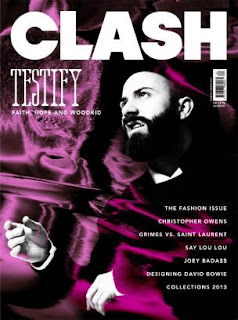Asda Magazine : 1,963,201 - % change y/y: -0.9 - Sold copies: 0
Tesco Magazine : 1,931,673 - % change y/y: 0.2 - Sold copies: 0
TV Choice : 1,277,850 - % change y/y: -5.7 - Sold copies: 1,277,850
Tesco Real Food : 1,223,333 - % change y/y: 0.5 - Sold copies: 0
What's on TV : 1,215,609 - % change y/y: -4.6 - Sold copies: 1,215,609
The Top 5 Magazines of 2011.
Tesco Magazine ( Cedar Communications Limited ) : 2,018,375 ; 1.7%
Asda Magazine ( Publicis Blueprint ) : 1,949,451 ; -18.1%
The National Trust Magazine ( National Trust ) : 1,948,384 ; 3.5%
TV Choice ( H Bauer Publishing ) : 1,304,382 ; -4.3%
What's on TV ( IPC Media Ltd ) : 1,253,697 ; -0.3%
Music Magazines
The Stool Pigeon : 54,588 - % change y/y: - Sold copies: 0Classic Rock ( Future Publishing Ltd ) : 62,354 ; -7.9%
Kerrang! ( Bauer Consumer Media ) : 42,077 ; -2.1%
New Musical Express ( IPC Media Ltd ) : 27,650 ; -14.0%
The top 5 magazines in 2011 tell us a lot about what genre is most popular. The top 2 are to do with big supermarkets, and are usually free by the entrances to the stores or at the checkouts. The next is a The National Trust Magazine. This will be very popular with people who are into nature, but also elderly people because they have time to visit the places that are like country parks. Magazines 4 and 5 are both TV magazines, which are probably popular because the information given is going to be correct, and some peoples lives revolved around TV. Yes, TV listings can be accessed on the internet, but some people cannot access them so the magazine is the most reliable source.
The top 5 magazines in 2011 tell us a lot about what genre is most popular. The top 2 are to do with big supermarkets, and are usually free by the entrances to the stores or at the checkouts. The next is a The National Trust Magazine. This will be very popular with people who are into nature, but also elderly people because they have time to visit the places that are like country parks. Magazines 4 and 5 are both TV magazines, which are probably popular because the information given is going to be correct, and some peoples lives revolved around TV. Yes, TV listings can be accessed on the internet, but some people cannot access them so the magazine is the most reliable source.








